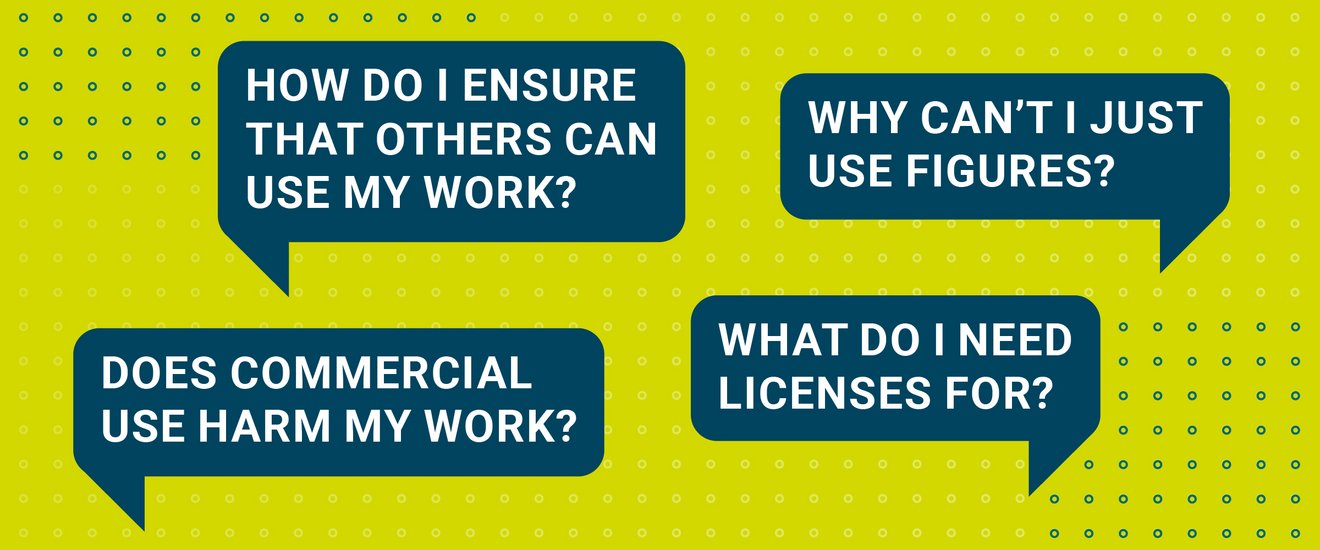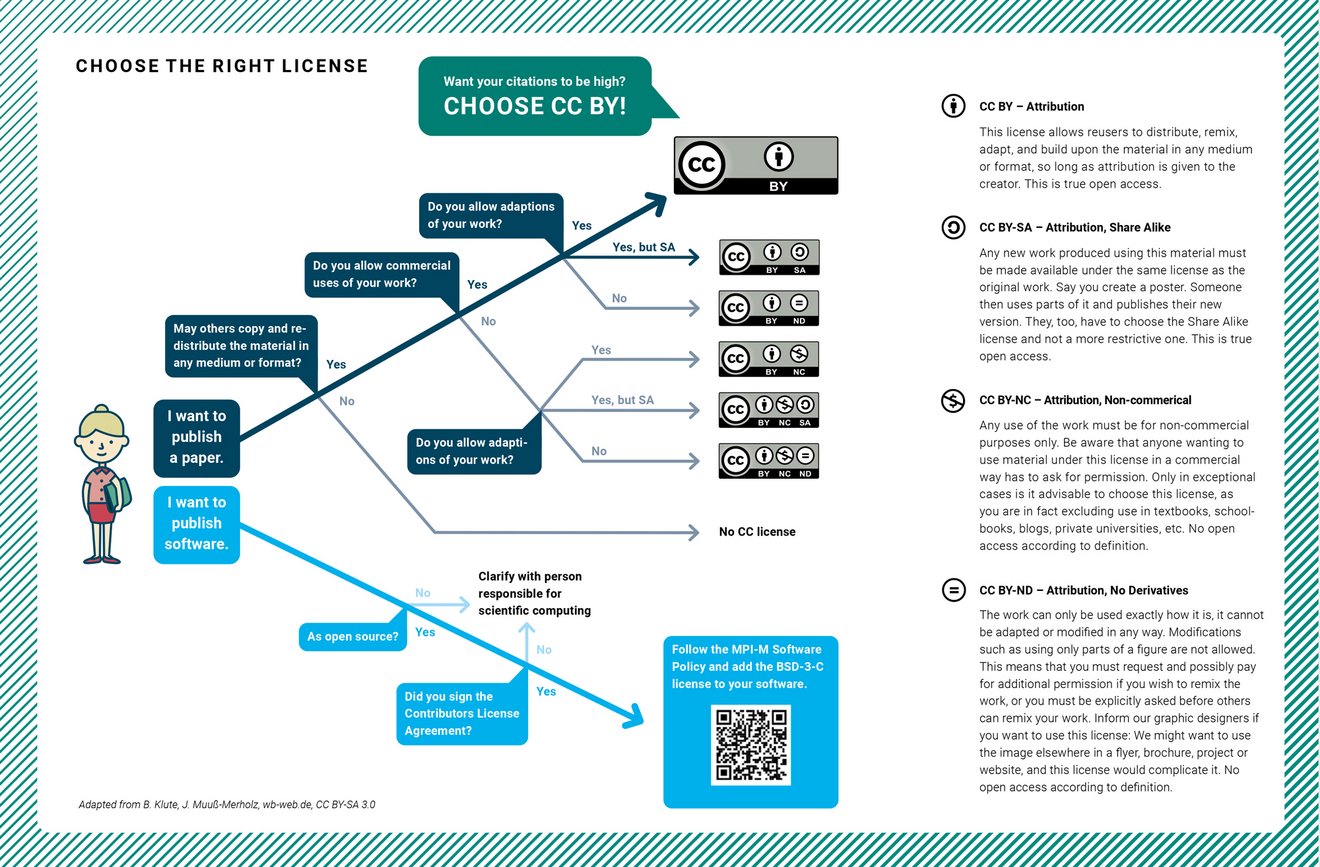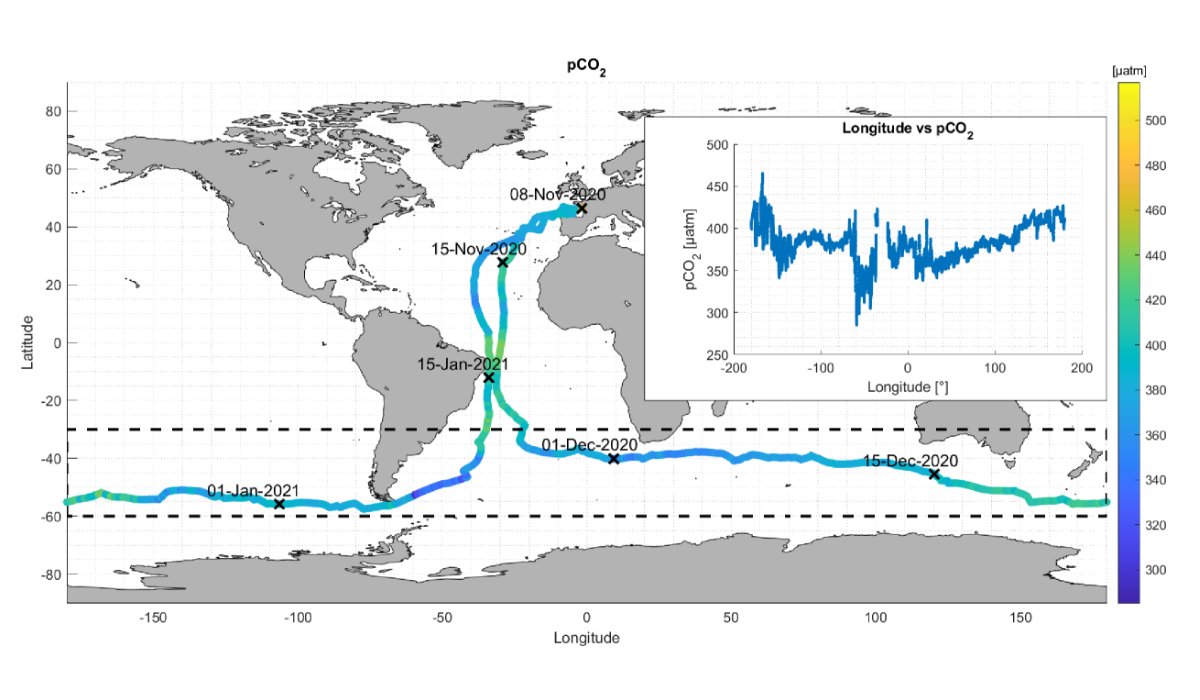Scholarly publishing of papers or software

You are the author/creator
Licenses make it easy for creators/authors to grant rights of use and provide clarity for anyone who wants to use copyrighted works. They are essential for open science and promote the legally secure dissemination and re-use of research results. Licensed content is science-friendly: increased visibility, dissemination, and reuse.
This flyer explains what Open Access is, what Creative Commons licenses and the BSD-3-C license are, how to choose the correct license for your research, and how to cite correctly.
What is open access?
Open Access is the initiative to make research and knowledge freely available through the internet for public reuse.
Brinken, H.; Hauss, J.; Rücknagel, J. (2021): Open Access in 60 Sekunden.,
https://doi.org/10.5446/50831; CC BY 4.0
The Creative Commons licenses (CC)
CC licenses are internationally acknowledged and are a standardized way to allow the creator to retain copyright whilst allowing others to copy, distribute, and make use of their work.
Hybrid journals, where you can choose whether your paper will be published Open Access or not, might offer you to actively choose a CC license during the publication process. Ideally, choose CC BY. The hybrid journals include, among others: AGU journals (e.g. Geophysical Research Letters, Journal of Geophysical Research) and AMS journals (e.g. Journal of Climate).
Attention! For an AMS publication, you have to explicitly request a Creative Commons license after your paper has been accepted.
The BSD-3-C license for software
Writing software is a creative act generating intellectual property rights you own. Your working contract says you transfer most of these rights to MPI-M. If you share your software as “open source”, this is in contradiction to your working contract. To resolve this conflict, sign the Contributor License Agreement (CLA), which arranges for a sharing of the rights to use the software. The CLA obliges you to add the BSD-3-C license to your software. This license allows all kinds of uses to the licensee as long as the BSD license is replicated in the code. Now it is “Open Source” and, as such, comparable to “Open Access”. The MPI-M Software Policy provides more details.
The CLA and the Software Policy, including the BSD-3-C license, can be found on MPI-M’s webpage: Good Scientific Practice.

You are the user
Open Access doesnʼt always mean that you can freely use material or that others can use your material. When using material by others, such as figures or photos, check whether it is under a CC license and give appropriate credit. See examples below.
Correct citation for works with a CC license on the WWW:

- Indicate whether content has been modified (Adapted from ... )
- Creator of the work, year
- License, link to license if possible
- Complete reference at the end of the page
References
Marotzke, J., Milinski, S., Jones, C.D. (2022) How close are we to 1.5 degC or 2 degC of global warming? Weather, 77, 147-148. doi:10.1002/wea.4174.
Correct citation for unpublished works without a license:

- Creator of the work
Textfeld mit farbigen Hintergrund
If you really want to publish your own plot or graphic under this restrictive license and also transfer your rights to the publisher, please reserve a different unpublished version for us to use it for our outreach efforts.
Please be sure to contact in case of any uncertainty
Library and Information Services for Earth System Sciences
Carola Kauhs
Tel.: +49 (0)40 41173 - 267
publications@mpimet.mpg.de
Scientific computing
Reinhard Budich
Tel.: +49 (0)40 41173 - 369
licenses@mpimet.mpg.de
Communication
Yvonne Schrader
Tel.: +49 (0)40 41173 - 315
grafik@mpimet.mpg.de
